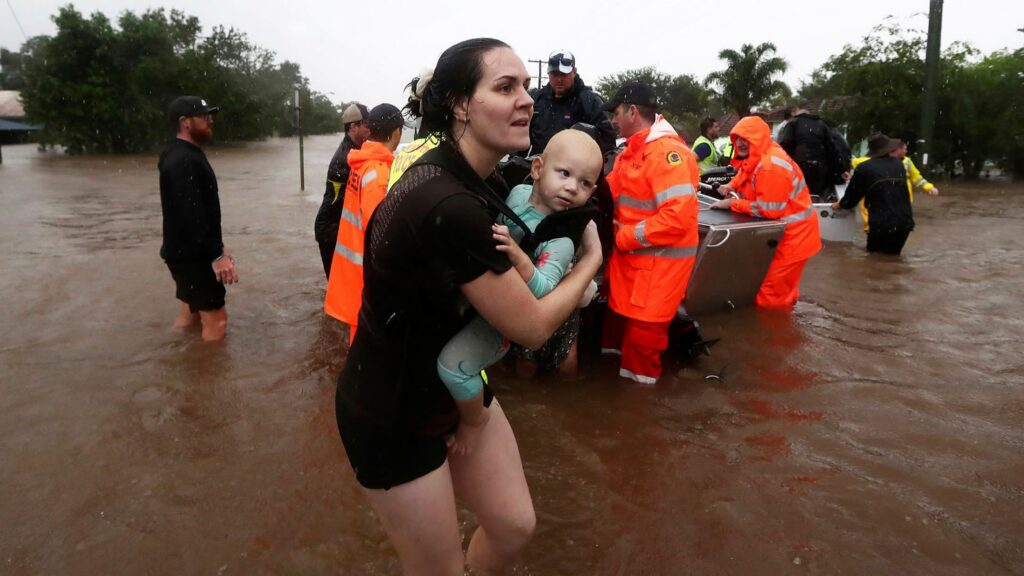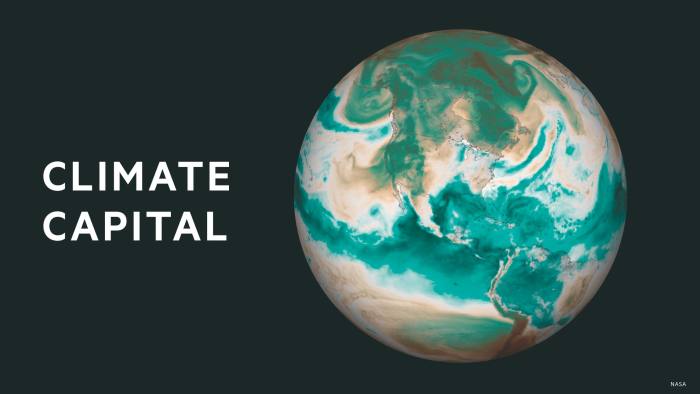Floods in Australia decimate insurers’ natural hazard budgets

Australia’s two biggest insurers will exceed their annual budget for natural hazards by hundreds of millions of dollars, as floods ravaging the country’s east coast add to a string of catastrophic weather events and worries about climate change.
Two years after the worst bushfires on record tore through the country, Sydney was on high alert on Wednesday, with warnings of torrential rain and several communities told to be ready for evacuation.
Dominic Perrottet, premier of New South Wales, said the extreme rainfall and flooding, which has left at least 12 people dead, was an “unprecedented situation that requires an unprecedented response”.
The Insurance Council of Australia, the industry body, said it had already received almost 50,000 claims from customers.
Insurance Australia Group (IAG) and Suncorp, the industry leaders, said they expected claims to rise as the scale of the damage became clear and with more flooding probable further south.
IAG said the company’s reinsurance arrangements would limit its total cost from the floods to A$95mn ($69mn), while Suncorp said the total cost would be A$75mn. But the real cost — born in part by reinsurers — would likely be far higher, with Suncorp chief executive Steve Johnston warning: “We’re going to have a lot of large losses.”
Neither IAG nor Suncorp would put a total figure on potential claims.
Demonstrating the potential scale of the cost, waste management company Cleanaway said it had lost up to 30 rubbish collection trucks in the Brisbane floods, valued at about A$500,000 each.
Both IAG and Suncorp predicted the total cost of extreme weather-related claims to the companies would exceed A$1bn each for the financial year, which ends on June 30.
Both insurers fund climate research and have been vocal advocates for more government spending on climate adaptation, but they have routinely underestimated the insurance cost of extreme weather.
IAG puts aside what it calls a “natural perils allowance” each year. Since 2010, the allowance has been exceeded in all but three years, in many instances by well over A$100mn, according to company accounts.
The company said it expected to exceed its allowance by A$280mn this year because of the floods and a series of extreme weather events in late 2021.
Suncorp has a similarly poor record and said it expected to blow its own allowance by A$95mn this financial year.
Rade Muslin, an actuary with consultancy Finity, said insurers were struggling to pick out long-term trends from relatively short-term data sets. But he said a rise in “mid-level” extreme weather events in recent years was in line with climate scientists’ predictions.
“Extreme weather indices have been consistently showing an increased propensity to have large rain events. Globally, you saw Hurricane Harvey, terrible floods in the UK and Europe in the last two years, Hurricane Dorian in the US — I think there has certainly been a high frequency of extreme rainfall events in various parts of the world in recent years,” he said.
The Intergovernmental Panel on Climate Change released a report on Monday warning there was a “brief and rapidly closing window” to adapt to climate change.
Climate Capital

Where climate change meets business, markets and politics. Explore the FT’s coverage here.
Are you curious about the FT’s environmental sustainability commitments? Find out more about our science-based targets here